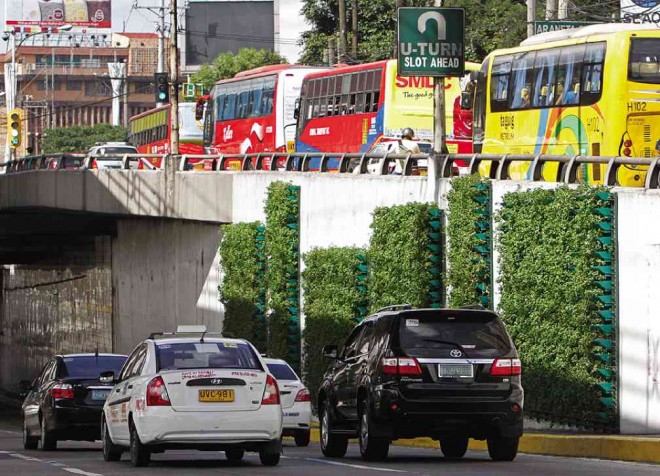How green is Metro Manila? Plantitos, plantitas hailed for enlivening NCR concrete jungle
MANILA, Philippines — The “plantita” trend made Metro Manila greener by reducing the impact of rapid infrastructure development, the Department of Environment and Natural Resources (DENR) said Tuesday.
To keep the movement alive, the DENR also urged Metro Manila residents to cultivate vertical gardens to maintain green spaces.
“We can only do so much based on our existing laws in preserving the green spaces in Metro Manila, but even an ordinary citizen can help in this endeavor. Kahit maliit lupa niyo—backyard lang—eh malaki na rin pong tulong iyan, (Even if it’s a small patch of land — just the backyard, it is already a significant contribution),” DENR Undersecretary Benny Antiporda said in a statement.
He said, “the trend of plantitos and plantitas has helped a lot to reverse the impacts of the fast infrastructure development in the National Capital Region (NCR).”
During the quarantine protocol in 2020, many new plant hobbyists emerged as urban residents adopted the trend of indoor gardening.
Article continues after this advertisementAntiporda, however, cautioned plant hobbyists not to obtain plants illegally since the demand for ornamental plants also “invited the unwanted proliferation of plant poachers.”
Article continues after this advertisementHe added that growing non-native plants could harm the environment by introducing pests or diseases that may reach other plant species.
According to the statement, the DENR-Biodiversity Management Bureau (BMB) promoted the Urban Biodiversity Program, such as Urban Forest Bathing, and green infrastructures to increase green space and biodiversity.
Environment Secretary Roy Cimatu noted that green space including green roofs, vertical gardens, urban forest parks, and the linear forests on walkways, transport routes and river systems is beneficial to the citizens.
“These networks of green spaces improve air quality, reduce heat, increase energy efficiency, reduce noise pollution, and provide habitats for wildlife. It will help relieve the stress of average Filipinos by enhancing the aesthetics of their surroundings, especially during this time of health crisis,” Cimatu said.
Metro Manila residents earlier woke up to a blanket of smog, which experts said was the result of pollution and human activity.
READ: ‘Human activities,’ not Taal Volcano, caused recent smog in Metro Manila — Phivolcs
Antiporda said the department is “committed to augment the green spaces in the NCR in the best ways that it can and to promote the use of native species.”
Faith Yuen Wei Ragasa, Inquirer trainee
RELATED STORIES
‘Rage gardening’ blossoms in PH
Lower air pollution recorded in Metro Manila on New Year’s Day
